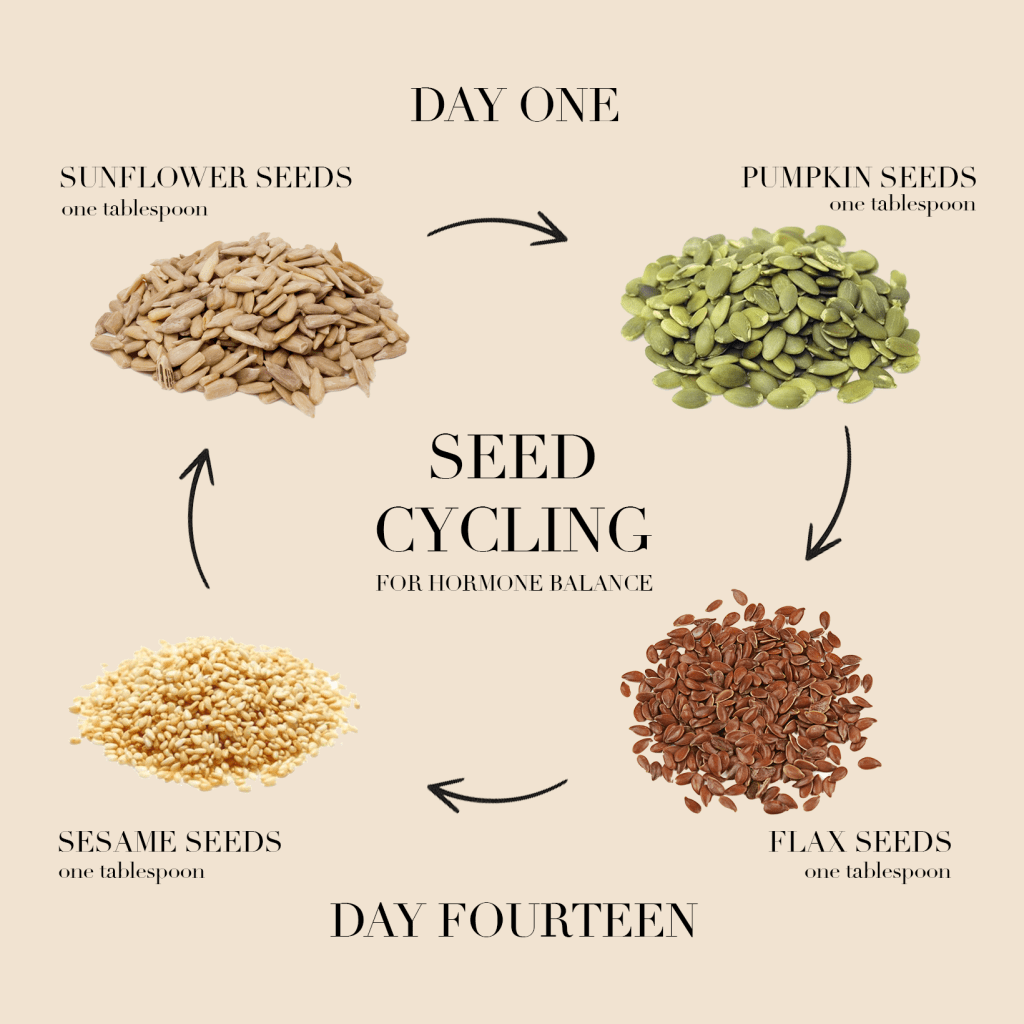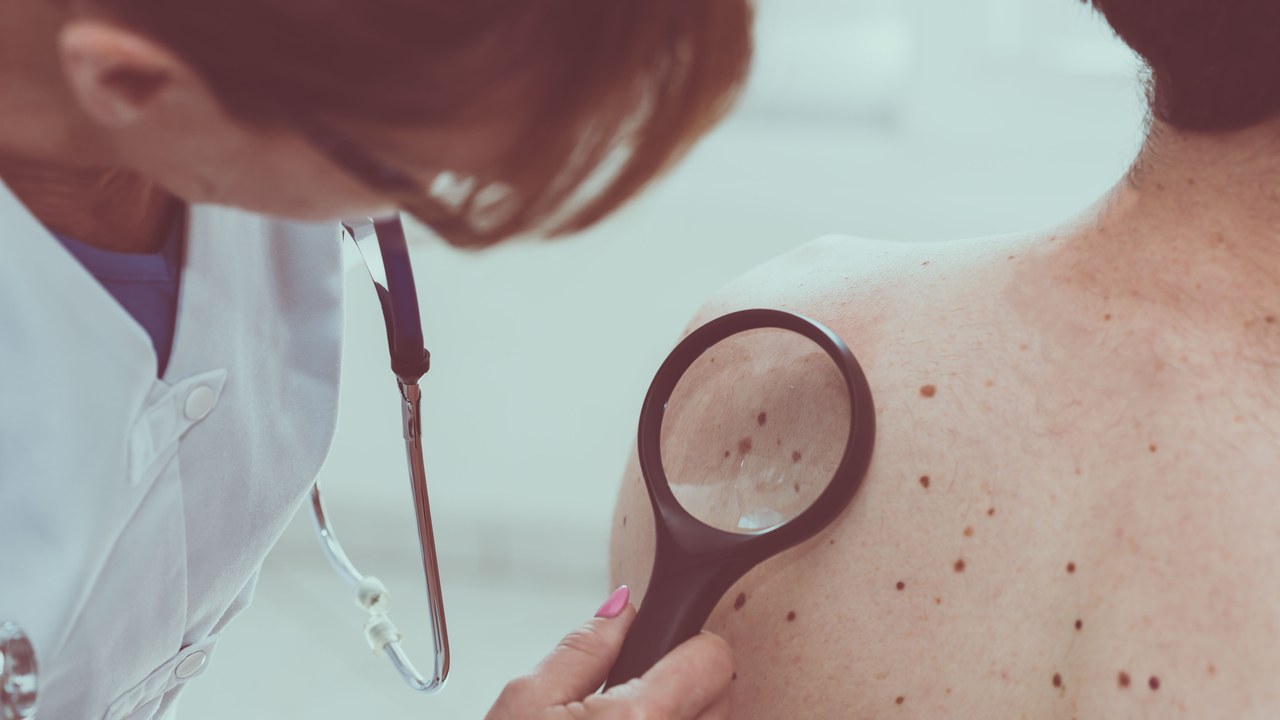Did you know about seed cycling? This hormone-balancing method is one of the most popular wellness trends, and for a solid reason. Hormone abnormalities are affecting an increasing number of women.
Hormones in women are a complicated system that can maintain a delicate balance. Diet, exercise, sleep, stress levels, and environmental pollutants have a significant impact on women’s hormones. This means that any of these factors have the potential to upset your hormone balance. As a result, a minor hormone imbalance can be the root of a variety of health issues, including irregular periods, acne, PCOS, thyroid diseases, and chronic fatigue.
One of the best things about seed cycling is that it can benefit a woman at any time of her life. But I often recommend it to women who are going off hormonal birth control as a way to recover their natural cycle and start naturally improving their hormonal health.
What is Seed Cycling?
Seed cycling is the technique of eating specific seeds during the two main phases of your menstrual cycle (follicular and luteal) to help keep estrogen and progesterone levels in control. It’s a gentle and natural method for reducing PMS symptoms, increasing fertility, and stimulating menstruation if it’s absent (amenorrhea). Moreover, many other symptoms can cause by hormonal imbalances.
Many women who suffer from PMS, polycystic ovarian syndrome (PCOS), post-birth control syndrome (PBCS), irregular periods, acne, and breast pain would benefit from seed cycling. You can use it 28-day cycle as an example of how to get started with seed cycling. Please keep in mind that your cycle may be longer or shorter. In truth, only a small fraction of women have 28-day cycles, so don’t be concerned. Simply modify the cycle to suit your purposes.
How do you start seed cycling for balanced hormones?
To properly understand seed cycling, you must first comprehend the two major periods of your menstrual cycle. The follicular phase is the first 14 days of your menstrual cycle, while the luteal phase is the second 14 days. When your hormone levels are balanced. Estrogen levels rise in the first part of your cycle, while progesterone levels rise in the second half while estrogen levels steadily fall. PMS symptoms, menstrual cramps, acne, brief luteal phases, anovulation, irregular cycles, and amenorrhea all can cause by estrogen-progesterone imbalance.

PHASE 1: DAYS 1 To 14 OF YOUR CYCLE (OR MENSTRUATION TO OVULATION)
1-2 teaspoons flax seeds
1-2 teaspoons pumpkin seeds
From the first day of your period to the day before you ovulate. Eat 1 to 2 teaspoons of freshly ground flax seeds and raw pumpkin seeds every day until day 14 of your period. These seeds can help raise estrogen naturally while also providing fiber to help healthy estrogen metabolism. Seeds are high in important fatty acids and nutrients, such as zinc and selenium, which are the building blocks for producing amazing hormones.
Flax seeds are high in lignans which have been found to help prevent osteoporosis. However, it improves estrogen and progesterone levels and reduces the risk of heart disease in women. Women with PCOS who eat flax seeds have been shown to have a positive shift in androgens, which are the hormones that cause hair loss, acne, and hirsutism.
Studies have also shown that incorporating flax seeds in your diet can help with cyclical breast tenderness, such as the kind that occurs shortly before your period. It’s also worth noting that lignans present in pumpkin seeds have been shown to help prevent breast cancer in several studies.
PHASE 2: DAYS 15-28 OF YOUR CYCLE (OR OVULATION TO MENSTRUATION)
1-2 teaspoons sunflower seeds
1-2 teaspoons sesame seeds
From the day of ovulation until the day before the first day of your period, you should eat one tablespoon of raw, ground sunflower seeds and one tablespoon of raw, ground sesame seeds a day. The luteal phase is the second part of your cycle when your progesterone levels rise and peak. The hormone progesterone is responsible for reducing PMS symptoms such as bloating, mood swings, and insomnia.
Women’s hormones have been demonstrated to benefit from sesame seeds, even after menopause. Lignans and essential fatty acids found in sesame and sunflower seeds support the hormones that take us through the luteal phase.
How about seed cycling in menopause?
Perimenopausal and postmenopausal women can also benefit from seed cycling if they begin on any day and follow the same 2-week rotation plan. Seed cycling can help reduce symptoms connected with decreasing hormone levels because estrogen and progesterone levels normally decline during menopause. Seed cycling has also been shown to reduce the effects of hormone changes. Especially in perimenopause by lowering hot flushes and mood swings. However, boosting energy levels and sleep quality. Seed cycling can help women who are having amenorrhea (a lack of periods) by starting the 2-week cycle at any time.
THE BENEFITS OF SEED CYCLING
Seeds can help with hormone support in the following ways:
- Reduce inflammation
- Improve estrogen dominance
- Progesterone levels keep at a healthy level
- Maintain a healthy estrogen-to-progesterone ratio
Seed cycling can help with a variety of illnesses and ailments, including:
- PMS
- Amenorrhea
- Perimenopause
- Menopause
- Thyroid problems
- Fertility problems
- Endometriosis
- PCOS
- Ovarian Cysts
- Irregular Periods
- Hormonal Acne
- Hair loss
- Breasts pain
- Bloating
- Mood swing
- Insomnia
How long does the result take to appear?
Seed cycling should not be used only to balance hormones, as it should be with any diet or health plan. Seed cycling can only use as part of a wider hormone-regulation plan, not as a substitute for a healthy diet and lifestyle. Any hormone-balancing protocol should start with a well-balanced diet that includes a variety of foods. However, taking care of your gut health, reducing stress, and prioritizing sleep.
To work with your body, seed cycling takes time. It can take up to three months of daily use before you notice any advantages. Keeping a notebook to monitor your symptoms over a month can allow us to identify the changes that occur over time.















